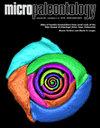底栖有孔虫对恶劣环境的重新殖民:以小安的列斯火山弧蒙特塞拉特岛为例
IF 1.6
4区 地球科学
Q3 PALEONTOLOGY
引用次数: 1
摘要
位于蒙特塞拉特岛上的Soufrière Hills火山的喷发历史跨越了200多万年。在此期间,火山经历了多次喷发,其间有低活动或休眠期。最近的一次活动开始于1995年,发生了一系列重大喷发事件。其中最近的一次,也是本研究的重点,发生在2006年5月20日。这次巨大的圆顶坍塌仅在3小时内就产生了9000万立方米的火山物质,推动火山灰云穿过空气,火山碎屑流沿着火山一侧流入海洋。在这项底栖有孔虫的研究中,研究人员分析了蒙特塞拉特海岸附近四个地点的岩心,包括那些从2006年火山灰云路径内收集的岩心,位于蒙特塞拉特海岸以西约10公里处。在这个地区,一个岩心含有6-7厘米厚的火山灰,覆盖在半深海沉积物上。火山灰分为两层,一层是2006年喷发产生的3厘米厚的火山灰层,另一层是2003年早些时候喷发产生的3-4厘米厚的火山灰层。其他岩心是从未受近期火山灰沉降影响的地区收集的,为受影响地区的比较提供了基线。在蒙特塞拉特岛的东部和东南部,情况有所不同,因为这是大量火山碎屑流沿着焦油谷流下的方向,对海底的影响更为剧烈。还有两个灭绝的火山中心,可以在不同的时间尺度上调查海底的重新殖民。蒙特塞拉特岛西部的遗址记录了机会性类群的底栖有孔虫的快速殖民,与中国南海皮纳图博山附近的情况相似;而东部的遗址记录了更广泛的类群的缓慢再殖民模式,与南大洋欺骗岛的记录相似,不同的底栖类群发挥了先锋作用。本文章由计算机程序翻译,如有差异,请以英文原文为准。
Re-colonization of hostile environments by benthic foraminifera: an example from Montserrat, Lesser Antilles Volcanic Arc
The Soufrière Hills Volcano, on the island of Montserrat, has an eruption history spanning over 2 million years. During this time the volcano has undergone multiple eruptions with intervening periods of low activity or dormancy. The most recent activity began in 1995 and has seen a series of major eruptive events. One of the most recent of these, and the focus of this study, occurred on the 20th May 2006. This major dome collapse produced 90 million m3 of volcanic material in only 3 hours, propelling ash clouds through the air and pyroclastic flows down the side of the volcano and into the sea. In this study of benthic foraminifera, cores from four sites off-shore Montserrat are analysed, including those collected from a location within the path of the 2006 ash cloud, around 10 km west of the Montserrat coast. In this area, one core contained 6-7 cm of ash overlying hemipelagic sediments. Volcanic ash is present in two distinct layers, one 3 cm layer produced by the 2006 eruption and the other, 3-4 cm layer, from an earlier eruption in 2003. Other cores were collected from areas unaffected by recent ash fall deposits and provide a base line for comparisons within the affected areas. To the east and south-east of Montserrat there is a different situation as this is the direction of travel of massive pyroclastic flows down the Tar Valley and the impact on the sea floor is more dramatic. There are also two extinct volcanic centres that allow the investigation of sea floor re-colonization on different time scales. The sites to the west of Montserrat record rapid colonization by benthic foraminifera of opportunistic taxa, comparable to that seen near Mt Pinatubo in the South China Sea while the sites to the east record a slower pattern of re-colonization by a wider spectrum of taxa, similar to that recorded at Deception Island in the Southern Ocean, with different benthic taxa performing the pioneering role.
求助全文
通过发布文献求助,成功后即可免费获取论文全文。
去求助
来源期刊

Micropaleontology
地学-古生物学
CiteScore
3.20
自引率
6.70%
发文量
18
审稿时长
>12 weeks
期刊介绍:
The Journal of Micropalaeontology (JM) is an established international journal covering all aspects of microfossils and their application to both applied studies and basic research. In particular we welcome submissions relating to microfossils and their application to palaeoceanography, palaeoclimatology, palaeobiology, evolution, taxonomy, environmental change and molecular phylogeny. Owned by The Micropalaeontological Society, the scope of the journal is broad, demonstrating the application of microfossils to solving broad geoscience issues.
 求助内容:
求助内容: 应助结果提醒方式:
应助结果提醒方式:


